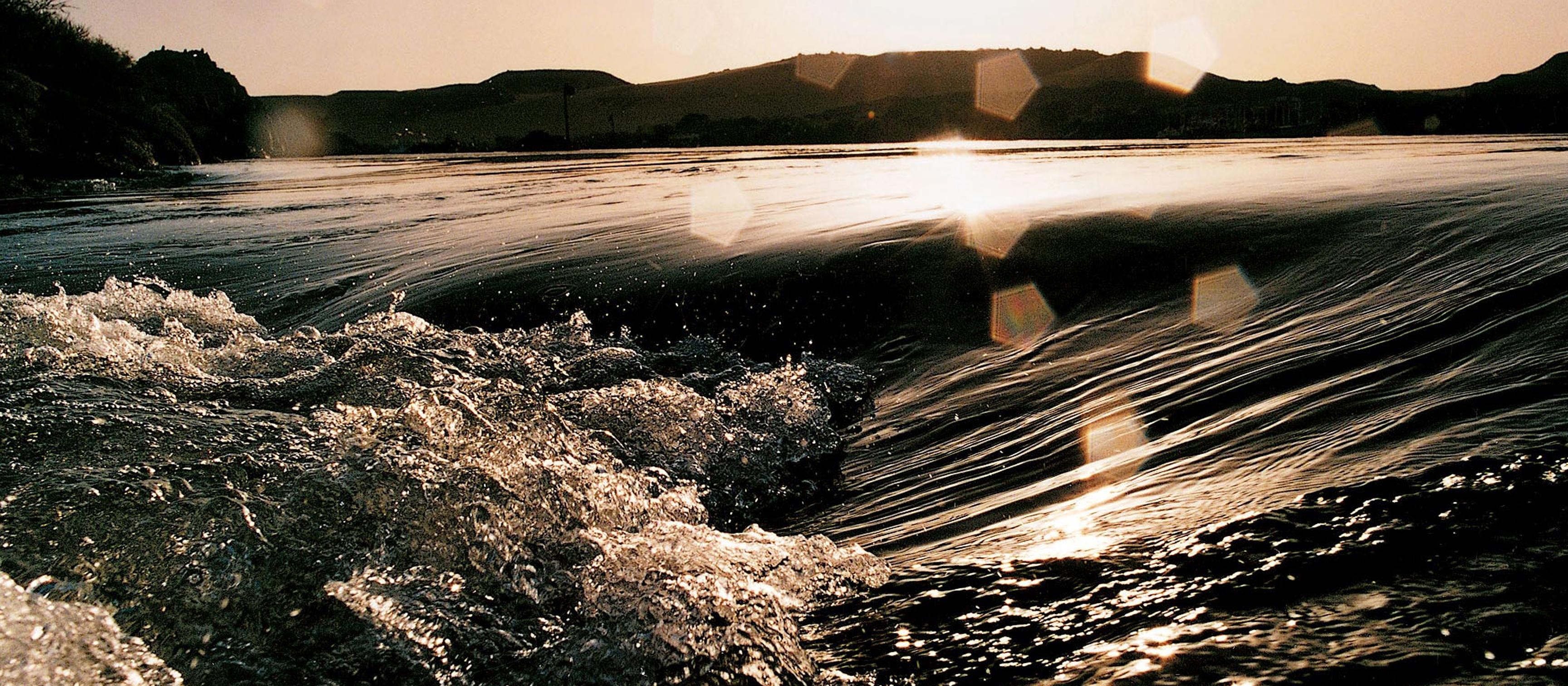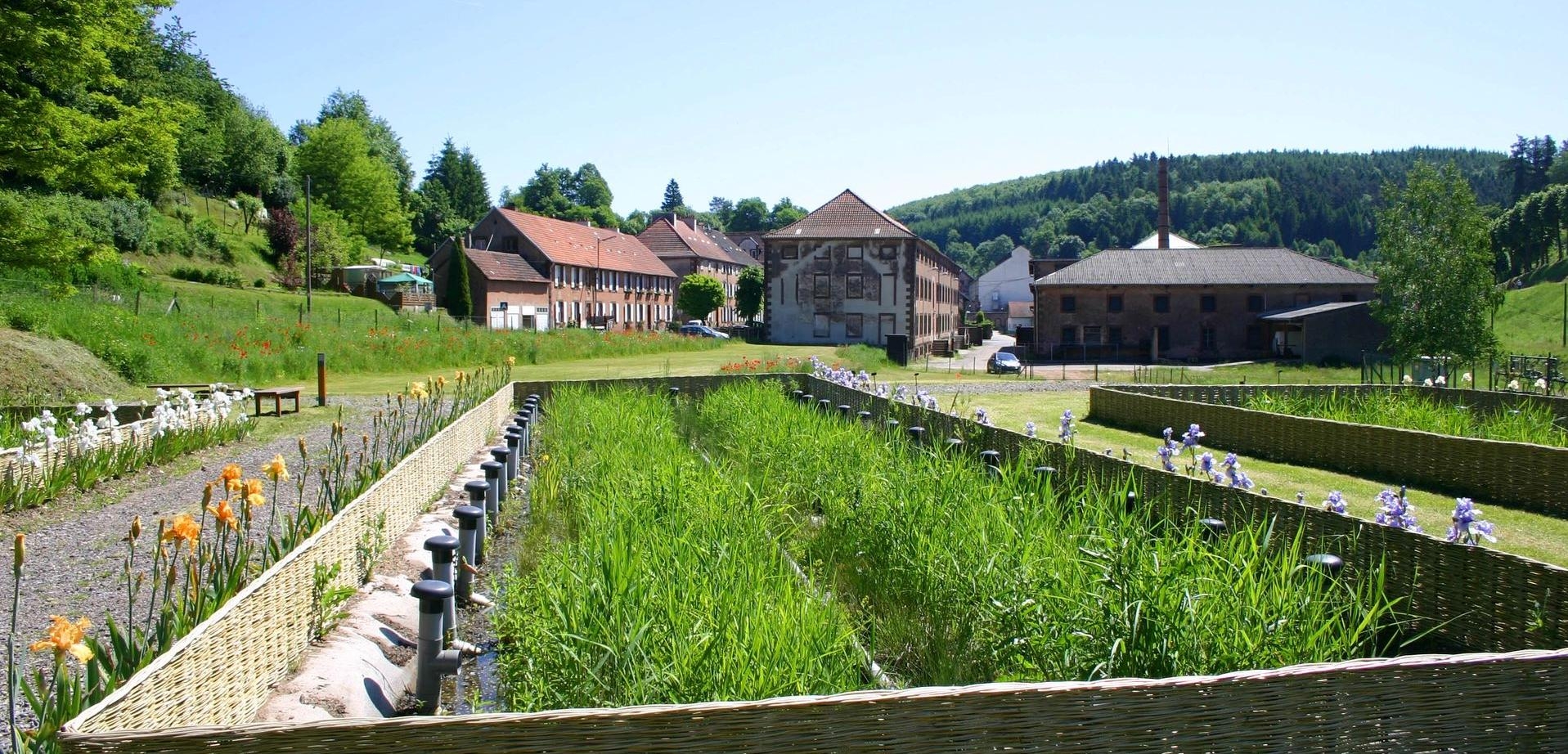
Water
“In keeping with the spirit of craftsmanship, we manage natural resources responsibly and sparingly.”
Axel Dumas, Executive Chairman of Hermès
Ambition
Thanks to its craftsmanship model and spirit of innovation, Hermès is developing while preserving and limiting its water consumption, the management of which is inseparable from ecological and economic responsibility in light of current global challenges. This ambition is shared by all divisions and professions within the company.
The company's policy is based on the following pillars:
- Improving the measurement of withdrawals to implement reduction solutions
- Enhancing production processes by favoring the most efficient technologies
- Innovating by using environmentally friendly solutions
Hermès sites withdraw water from natural environments and city water for agricultural, industrial, and sanitary uses. The volumes of water consumed are much lower than the volumes of water withdrawn since water does not enter into the composition of the products.
Organisation
Water consumption and withdrawal are priority and strategic issues within the Group, which has thus established strong and structured governance. The Group Industrial Director, who reports directly to a member of the Executive Committee, oversees matters related to industrial and agricultural water. The objectives in this area are validated and achievements are monitored by the Sustainable Development Committee. Each division establishes action plans and presents investment plans and necessary resources to the Industrial Management to achieve the Group's objectives. Major investments are validated by the Executive Committee.
Regarding the upstream value chain, the Director in charge of coordinating the Group's direct purchases, who reports to a member of the Executive Committee, oversees these issues with the divisions and their suppliers. The objectives in this area are validated and achievements are monitored by the Sustainable Development Board. Each division establishes action plans and presents the necessary resources to the Direct Purchasing Coordination Management to achieve the Group's objectives.
2024 Key figures
The different uses of the water resource
| Industrial Water | Agricultural water | Total | |
| Total recycled and reused water (m3) | 662,465 | 907,752 | 1,570,217 |
| Water withdrawal (m3) | 627,791 | 5,017,689 | 5,645,480 |
| Water discharges (m3) | 612,870 | 3,751,797 | 4,364,667 |
BREAKDOWN OF INDUSTRIAL WATER WITHDRAWALS BY MÉTIER IN 2024
Objectives
The company's practices revolve around two main ambitions:
- Continue decoupling industrial water withdrawals from business growth
- Voluntarily reduce industrial water withdrawals by 5% per year in intensity (m³ per million euros of revenue) from 2018 to 2030, on a constant perimeter, with increased attention to sites located in water-stressed areas
- Implement a multi-stakeholder approach and co-create with external stakeholders (regional authorities, municipalities, and professional associations) to optimize water management and discharge quality
In general, water resource management involves actions such as monthly monitoring of withdrawals and consumption, and deploying preventive maintenance programs.
Evolution of industrial water withdrawals
Over the past 10 years, the group has maintained its ambition to decouple its industrial water withdrawals from business growth, thanks in particular to precise monitoring of water recovery and reuse, as well as evolving practices in water-stressed areas.
For industrial sites, water does not enter into the composition of products, except in small amounts within the Perfume and Beauty division. Water consumption is the difference between water withdrawn and water discharged, meaning the water lost during the industrial process through evaporation, for example. For Hermès, the total volume of water withdrawn at industrial sites worldwide amounted to 627,791 m³ in 2024, primarily in Europe. Continued efforts to reduce water usage across all industrial sites have enabled the group to meet this ambition for several years.
Inspiring initiative
The filtering gardens of Saint-Louis
The preservation of natural resources is part of the House’s DNA, and particularly for water, the presence of which determined the installation in 1586 of what would become the Cristalleries Saint-Louis. Today, the production unit is located in the heart of an exceptional territory recognised since 1989 as a cross-border biosphere reserve by UNESCO.
In its approach to respecting biodiversity, in 2015 the production unit incorporated an innovative solution for the natural treatment of water by phyto-restoration: “Les jardins de Saint-Louis”. In a green setting, this water treatment facility is composed of plant and mineral filters, harmoniously integrated into a wetland. Requiring no energy or chemical inputs, this system ensures optimal water purification and its performance is superior to that of a traditional physico-chemical installation.

Our policies and publications
To go further and discover our main sustainability policies and recent publications
